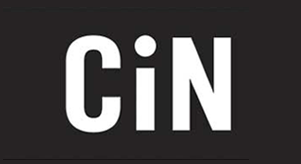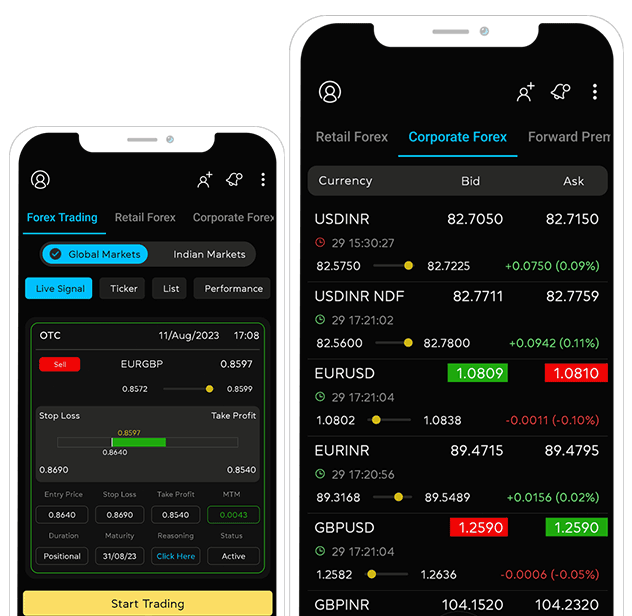Your team is your greatest asset. Regular training encourages overall growth.
Click on the modules below for the forex training requirement for corporates.
Choose Your Course
Professional forex training modules for your team
1
Forex Basis
₹30,000
2
Forex Advance
₹42,000
3
Technical Analysis Basics
₹30,000
4
Technical Analysis Advanced
₹30,000
5
Technical Analysis Professional
₹30,000
Course Curriculum
1
Forex Basis
₹30,000
Understanding Forex Markets
Introduction to Forex Markets
- Global Forex Markets
- Indian Forex Markets
Factors affecting exchange rates
- Economic factors
- Non-economic factors
Basic forex definitions
- Cash, Tom, Spot, Forward
- Exchange rate quotations
- Bid / Ask rate and spreads
Forex Mathematics
- Computation of Cash, Tom, Spot rates
- Computation of Forward rates Fixed Maturity/period maturity
Forex affecting exchange rates
- Economic factors
- Non-economic factors
- Factors affecting Indian Rupee
Factors affecting Indian Rupee
- What is Forex Risk Management?
- Risk Management Instruments
- Interest Rate Parity Principle
- Reference Books & Suggested Readings
2
Forex Advance
₹42,000
Currency Options and Advanced Derivatives
What is a Currency Option?
- Various types
- European Option vs American Option
- Terminologies
Basic Option Strategies
- Put Option and Call Option
- Option Pay-off profiles
Option Pricing Dynamics
- Strike Price vs Forward Rate
- At the Money Option (ATM)
- In the Money Option (ITM)
- Out of the Money Option (OTM)
Option Premium Analytics
- Intrinsic Value (IV)
- Time Value (TV)
Currency Option Pricing?
- Brief History
- Black-Scholes Option Pricing Model
- Currency Option Pricing-Garman-kohlhagen model
Vanilla Options
- Using Vanilla Options to hedge forex risk
- Worst Case Rate method
Zero Cost Option Strategies
- Range Forward
- Participating Forward
- Leveraged Forward
- Seagulls
Option Strategies for trading/speculation purposes
- Straddles and Strangles
- Butterfly
- Condor
3
Technical Analysis Basics
₹30,000
Basics, Trend Analysis, Price Patterns
What is Technical Analysis
- Charts and Chart building
- Dow Theory
Trend Analysis
- Types of Trends
- Drawing Trendlines
- Trendlines for Trend Analysis
Supports and Resistances
- Support Lines and Resistance Lines
- Support turned Resistance
- Pivot Analysis
- Psychological Supports and Resistances
The World of Fibonacci
- Fibonacci series
- Golden Ratio and Divine Ratio
- Fibonacci in Technical Analysis
- Retracements and Projections
Price Pattern
- What are Price Patterns?
- Trend Reversal Patterns
- Trend Continuation Patterns
- Concept of Neckline
- Volume Patterns
4
Technical Analysis Advanced
₹30,000
Japanese Candlestick Charting
Introduction
- A brief History
- Constructing the Candlesticks
Basic Candlesticks
- Long and Short candlesticks
- Marubozu
- Spinning Tops
The Magic Doji
- Concept and importance of Doji
- Types of Doji
- Doji as Support and Resistance
The Stars
- Morning and Evening Stars
- Doji Stars
- Hammer, Inverted Hammer and Hanging Man
- Shooting Stars
Reversal Pattern
- Engulfing Patterns
- Harami and Harami Cross
- Piercing Line and Dark Cloud Cover
- Meeting Lines
Three Candlestick Patterns
- Upside and Downside Gaps
- Stick Sandwich
- White Soldiers and Black Crows
The Concept of Price Gaps
- Breakaway Gap
- Exhaustion Gap
- Runaway Gap
5
Technical Analysis Professional
₹30,000
Indicator Analysis And Elliott Waves
Concept of Technical Indicators
- What is an indicator?
- Why study technical indicators?
The Moving Averages
- Simple and Exponential Moving Averages
- Crossover of Moving Averages
- Moving Average Convergence Divergence (MACD) and its Histogram
Oscillators
- Momentum and Rate of Change (ROC)
- The Relative Strength Index (RSI)
- Stochastics – Slow and Fast
- Volume Oscillator
Volatility Indicators
- Bollinger Bands
- Average True Range
Elliott Wave Theory
- Ralph Nelson Elliott
- Basic Tenets of Elliott Wave Theory
- Impulse Waves
- Corrective Waves
- Waves within a Wave
- Significance of Fibonacci
- Elliott Wave Oscillator







